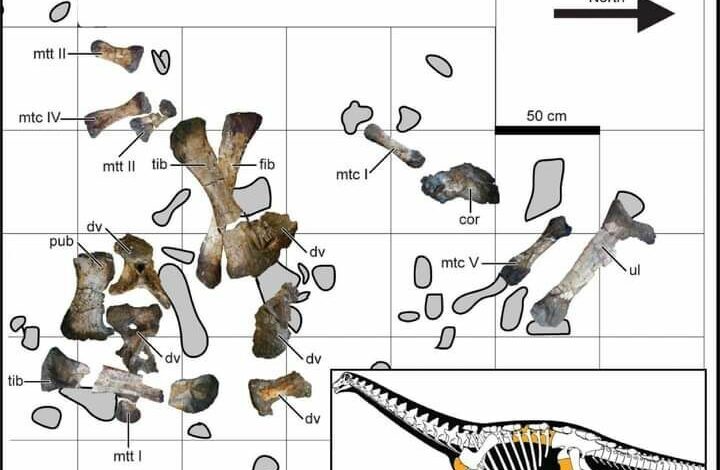
An team of international and Egyptian paleontologists have documented the discovery of a new herbivorous dinosaur that lived about 75 million years ago on what is now the Kharga Oasis in the Western Desert.
The study was published in the Journal of Vertebrate Paleontology (JVP).
The unearthed remains include vertebrae, shoulder blades, limbs, as well as pelvic bones.
The founder of the Mansoura University Center for Vertebrate Excavations and a researcher co-author of the scientific paper, Hisham Salam, said: “It is interesting that this discovery was not recent, as the remains of this dinosaur were discovered in 1977 by German scientists, at that time there was a scientific colonization, which no history will deny, by powerful countries, and Egypt, unfortunately, was among those colonies.”
“The remains of the Egyptian dinosaur were shipped to the University of Berlin under the cover of the German project for geological studies in the Egyptian Western Desert. Then, over the course of half a century, the fossils of the Egyptian dinosaur moved between the cellars and corridors of German museums and universities until it settled in the Museum of Natural History in Berlin, finally reaching the light of science on July 20, 2023.”
The dinosaur has been called “Igai Semkhu”, a name derived from the ancient Egyptian language.
The word Igai means “Lord of the Oasis” while Semkhu means “The forgotten”, due to its long history of oblivion in the vaults of various German museums.
It is now the seventh Egyptian dinosaur to be discovered.
A lecturer at Benha University, member of the research team “Salam Lab” and one of the authors of the study Belal Salem, confirmed that “Igai Semkhu” belongs to the family of giant titanosaurs, specifically the Saltasauridae family.
Its length ranges between about 10-15 meters and is slightly larger than its contemporary cousin, Mansourasaurus, and also differs in anatomical features such as the dorsal vertebrae, limb bones, and metatarsals.
The results of the study confirm that the regions of North Africa and Eurasia were closely involved in harboring giant terrestrial four-legged dinosaurs at the end of the Cretaceous period.
The scientific paper also showcases that the evolutionary history of dinosaurs in North Africa and the Middle East was more complex than expected, as evident with the increasing number of fossils being uncovered in the region.
Salem believes that “The discovery of the Egyptian dinosaur Igai Semkhu represents an important scientific achievement, as it contributes to enriching our understanding of the distant past and the evolution of dinosaurs on the surface of the earth.”
“Through such discoveries, Egypt confirms its vital role in protecting and documenting the precious natural heritage of the entire world.”




